Fresh from the ABC:
Mr Hockey was on the defensive today.
“Let’s not play the man, let’s actually deal with the policy,” he told the ABC’s AM program.
“Housing is very expensive and I understand that. Look, I totally understand that.
“When you’re committing so much of your wage to your mortgage, it’s a big ask, with all the other pressures in life.
“Yes, it is difficult for first home buyers to get into the market, there’s no doubt about that.”
Mr Hockey said the best way to tackle housing affordability was to increase supply, pointing to the responsibility of state governments when it comes to land release and planning decisions.
Bozo Joe then went on with flat lies:
The Coalition dismissed a proposal from the Greens to scrap negative gearing for any investment property purchased from July 1, to save billions of dollars and reduce competition for first home buyers.
“If you change negative gearing in a market like Sydney, with a very low vacancy rate, you are going to push up rents, which will have an horrendous impact on some of the lowest income families,” Mr Hockey said.
As MB has argued before this is outright bullshit.
First, the evidence shows overwhelmingly that negative gearing does little to boost housing supply, with investors piling into established homes rather than new construction (see below charts).
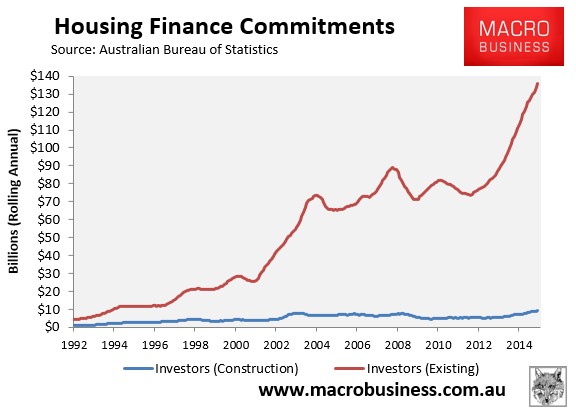
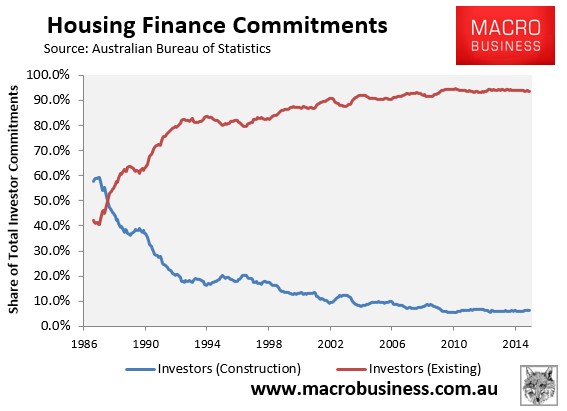
Therefore, in the event that negative gearing was once again quarantined so that losses could no longer be claimed against wage or salary income (as occurred between 1985 and 1987) and a proportion of investment properties were sold, who does Hockey think they would sell to? That’s right, renters (or other investors). In turn, those renters would be turned into owner-occupiers, thereby reducing the demand for rental properties, leaving the rental supply-demand balance (and rents) unchanged.
And guess what? This is exactly what happened between 1985 and 1987 when negative gearing was temporarily restricted by the Hawke/Keating Government. Rental growth between this period (shown in red) did not rise nationally, with periods of higher rental growth recorded both prior and subsequently:
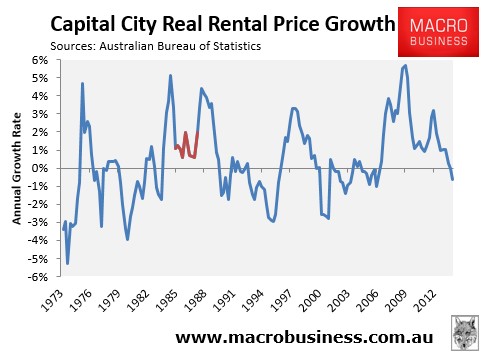
What about at the individual capital city level? Sure, there was stronger growth in Sydney:
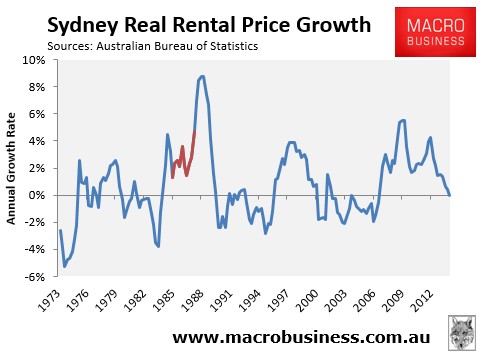
And Perth:
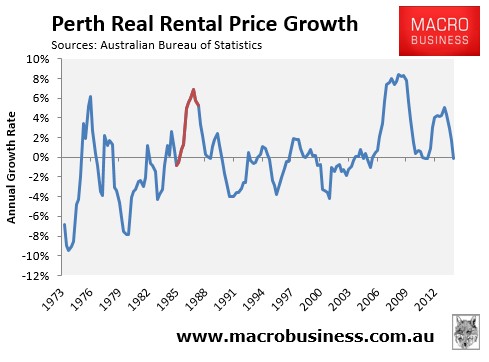
However, this was due to the fact that rental vacancy rates were very low at the time in these two cities – as shown in the 1987 Cabinet Submission on negative gearing (see below table) – not because of negative gearing’s temporary ‘abolition’.
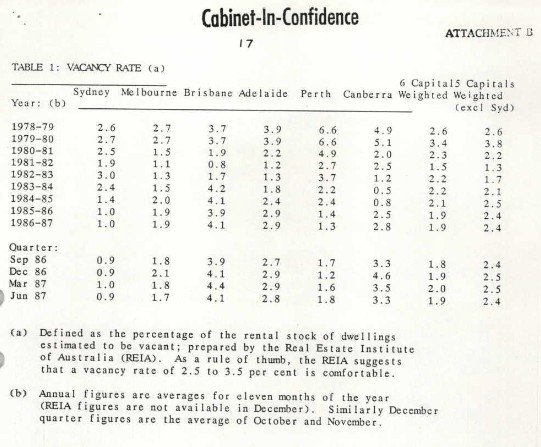
In the other capital cities, where vacancy rates were higher, there was zero impact on rents, which even fell in some jurisdictions (see below charts).
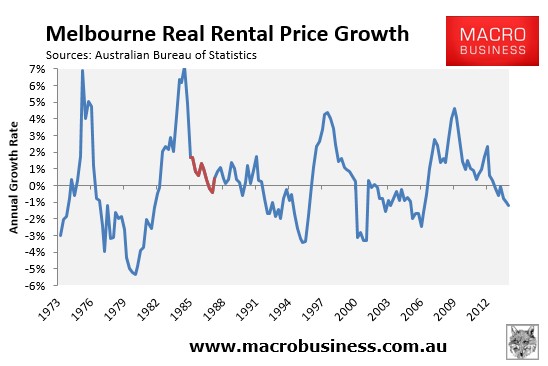
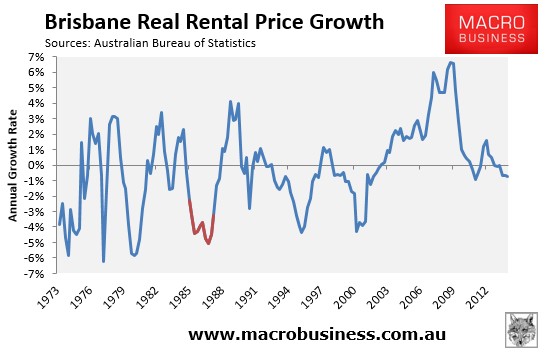
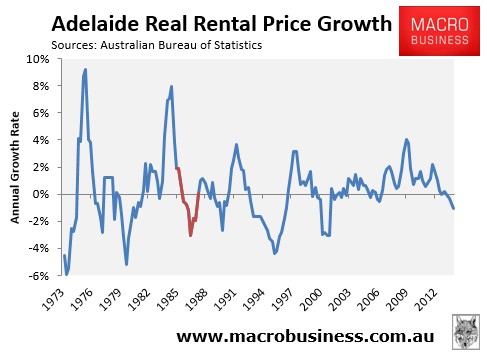
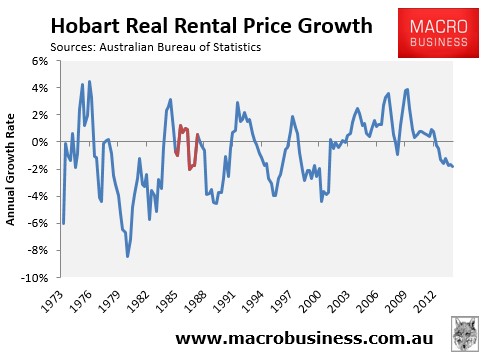
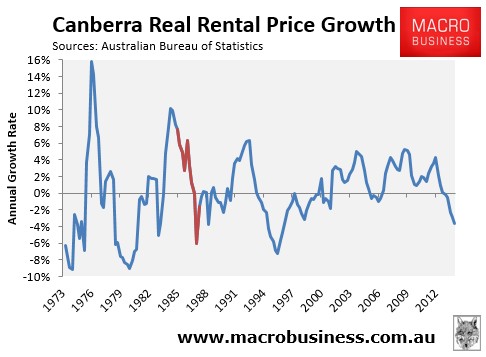
Indeed, the 1987 Cabinet Submission on negative gearing noted this exact phenomenon:
“Data for individual capital cities suggest that, as might be expected, rents have risen more rapidly in those cities where vacancy rates have been tightest. In the twelve months to March quarter 1987, rent increases in six of the eight capitals lagged the CPI”.
Now, if there was any truth whatsoever in Hockey’s claim that there would be a “significant increase in rents”, then wouldn’t rents have risen Australia-wide, rather than in only Sydney and Perth?
Blind Freddy can see that negative gearing does nothing to improve rental affordability or availability, precisely because it does nothing to boost housing supply. In effect, all it is doing is using taxpayer subsidies to push-up house prices (see next chart) and turn would-be home owners into renters – hardly a desirable outcome from a budgetary or social perspective.
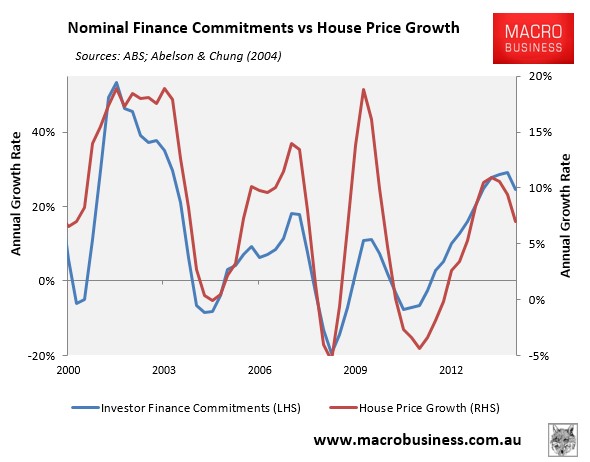
All of which makes Hockey’s claim that abolishing negative gearing would punish lower income families more galling. What about the financial security of young Australians who are being locked-out of the housing market due to the orgy of investor participation (see next chart), or are being forced to pay-off some of the world’s biggest mortgages, in part due to negative gearing? Do these people not matter?
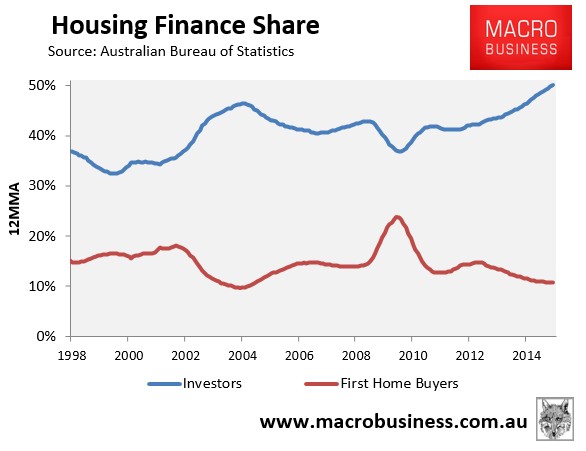
If negative gearing was unwound, there would be less pressure on house prices and younger Australians would not need to devote as much of their lifetime’s earnings to pay-off a home.
Home ownership rates, which have collapsed, would also be higher, particularly amongst younger cohorts:
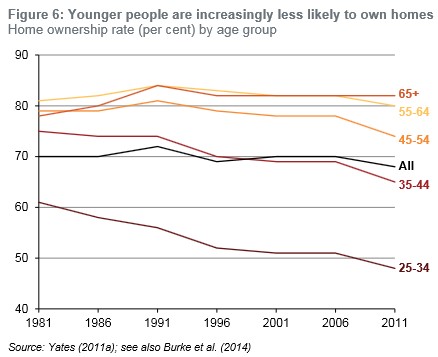
Abolishing negative gearing is a policy no-brainer which, sadly, Hockey seems intent to defend despite the overwhelming evidence that negative gearing is doing harm.
I guess this is what you get when you own multiple investment properties – unadulterated self-interest with little regard for the common good.

